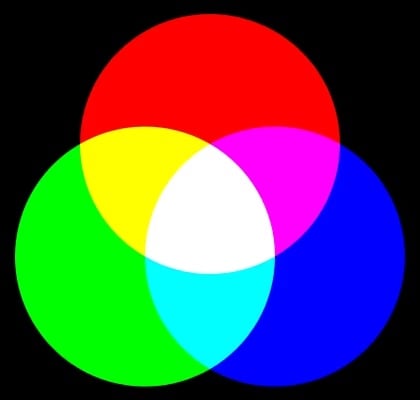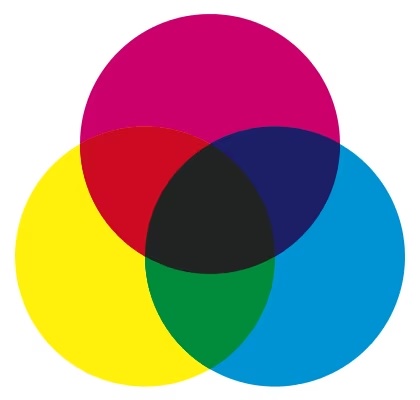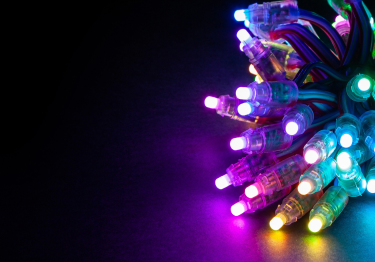RGB stands for Red, Green and Blue. These are the three primary colours of the additive colour system. In lighting we encounter RGB for coloured lighting. RGB lighting enables you to create millions of different colours of light, all based on these three primary colours.
Philips Hue uses RGB in its lamps and luminaires. This allows Hue bulbs to display as many as 16 million different colours.
Discover all lamps of Philips Hue
Additive versus subtractive colour system
The additive colour system is based on the mixing of different light colours. When two primary colours are mixed, you get a lighter colour. Mix the three primary colours (red, green and blue) and you will get white light. Unlike with paint, yellow is not a primary colour.
The best example of the additive colour system can be found in computer screens and televisions. Use a strong magnifying glass and you’ll notice that every pixel consists of a red, green and blue sub-pixel. By playing with the brightness of these sub-pixels, you can create any light colour.
The image below shows the mixing scheme of the additive colour system. It looks like this:
Red + green = yellow
Red + blue = magenta
Blue + green = cyan
Red + blue + green = white

The additive colour system is not to be confused with the subtractive colour system, which is used for printing, for example. This system is called 'subtractive' because when mixed, less and less light is reflected back, creating darker colours. The main colours of the subtractive colour system are cyan, magenta and yellow.

RGB lighting
RGB lighting can take on all colours, ranging from warm orange to cool blue. It is often used in LED strips. With RGB LED strips, we distinguish between three types:
- Classic RGB: an LED strip with triple diodes (red, green and blue on one diode). To form white light, the three diodes are used simultaneously. However, the white light may contain traces of other colours. This white light will not have the same brightness of a true white LED diode.
- RGB+W: an LED strip with triple diodes (red, green and blue on one diode) and a separate white diode for pure white light. Due to the greater distance between two diodes of the same colours, even light is not guaranteed. The distinction between different light beams will be easier to see with this type of LED strip.
- RGBW: an LED strip with quadruple diodes (red, green, blue and white on one diode). Provides nice even light in every colour.

